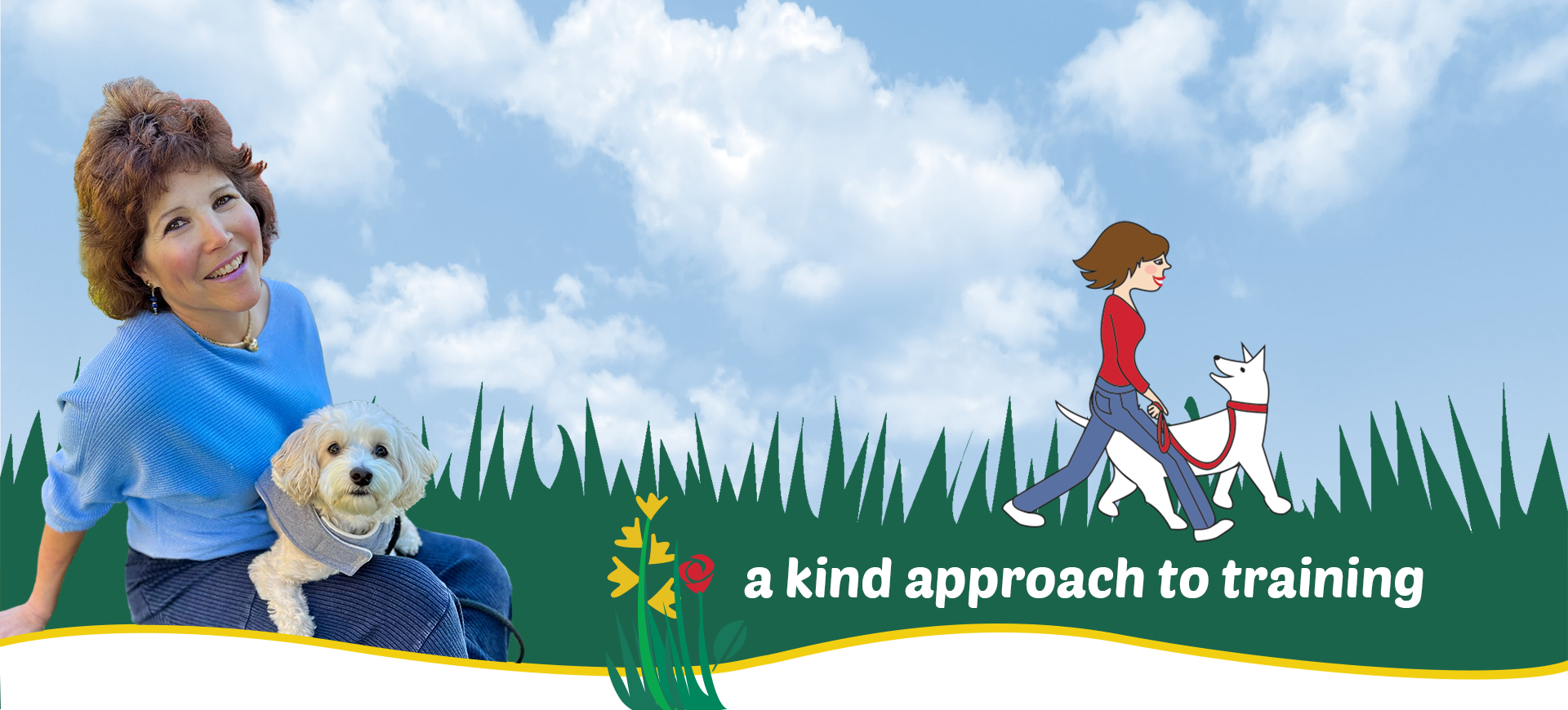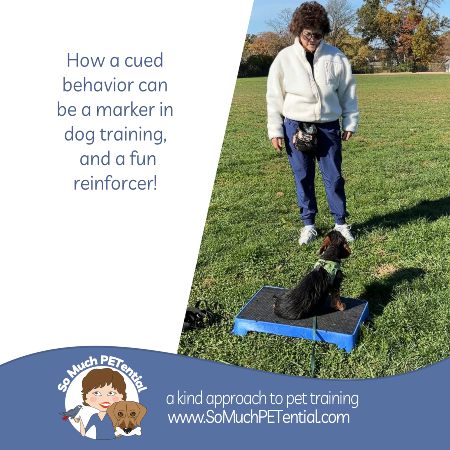When your pet is doing something that you don’t like, remember, he/she is not behaving to purposefully annoy you. The behavior simply works to get your pet something of value. In the case of sweet Sassy, she has a tendency to bark at and paw people who are in the kitchen and ignoring her, whether they are sitting at the center island, working at the counter, talking to each other or on the phone, or something else. And, while she is pretty loveable, her family definitely was not appreciating her attention seeking behaviors.
To solve it, they had tried just ignoring her or giving her something else to do, but they were not having success curbing her barking and pawing. If we take a look at what was happening, it gives us a better idea of why Sassy was pretty  persistent.
persistent.
When they’d give her something else to do AFTER she had already started attention seeking, they were actually reinforcing Sassy’s behaviors. Remember that consequences drive behavior. If barking and pawing got her attention, a toy, or an opportunity to play, she has a lot of motivation to want to do that when she is getting ignored in the kitchen.
Additionally, just trying to ignore a behavior often is not effective for numerous reasons. When reinforcement is withdrawn from a behavior that has a history of reinforcement, the animal will increase the intensity of the behavior before it weakens (called extinction burst) and it is pretty difficult to continue to ignore barking and pawing, even jumping on you. Eventually the likely scenario is that the person will do something to reinforce the stronger version of the behavior, thus teaching the learner that escalated attention seeking behaviors work. Also, when a behavior is ‘sometimes’ reinforced and sometimes not, that intermittency creates gamblers and gambling is pretty addicting. Behind many problem behaviors is some sort of intermittent schedule of reinforcement. The other problem with trying to ignore a behavior (not in this case, but in others) is that reinforcement doesn’t always come from people. Maybe the dog gets a lot of sensory and mental stimulation, and physical activity, from chewing on that sofa.
While they hadn’t tried any other punishment strategies, there are many potential negative ramifications with going down that path. Among them, punishment doesn’t help the pet to get its needs met, it can create apathy or aggression or avoidance behaviors, it most definitely does not foster a love for learning, and the animal can come to associate the giver of the punishment with that aversive.
So what did we do with Sassy to curb her annoying kitchen behaviors?
One thing we did was teach her what they’d rather her do instead. Laying on a bed in the corner of their kitchen was an acceptable alternative so we set out to teach Sassy that her bed is a comfortable, pretty awesome place to hang out. We did that through lots and lots of repetitions of reinforcing laying on her bed with treats. Then we began working on Sassy staying on her bed while people walked around, opened the refrigerator, talked, and even sat down in the chair that was a major trigger for her barking. This teaching will need to continue with increased distractions and duration.
Additionally, Sassy’s human mother experimented with different chew toys and learned a Himalayan chew would keep the little girl busy for a fairly long time. Not only that, Sassy would take her chew into another room. In anticipation that Sassy would begin her barking/pawing behavior, the chew could be given to Sassy in advance so as to prevent practice of attention seeking. Spending time on her Himalayan chew in another room is an incompatible behavior and data told us Sassy values doing that.
We also worked on teaching Sassy to lay down and relax in her crate, which is another option as a place for Sassy to be when they are in their kitchen, even giving Sassy her chew toy while in the crate.
There is still a lot of work to be done with Sassy but so far she is choosing to go to her bed often now on her own because it has such a history of a positive place to be. And her barking/pawing has been reduced.
My challenge to you is this – if you are frustrated with your pet’s behavior, take a step back, and come up with a plan that reinforces an alternative way for your pet to get its needs met. You will both be happier for it.






